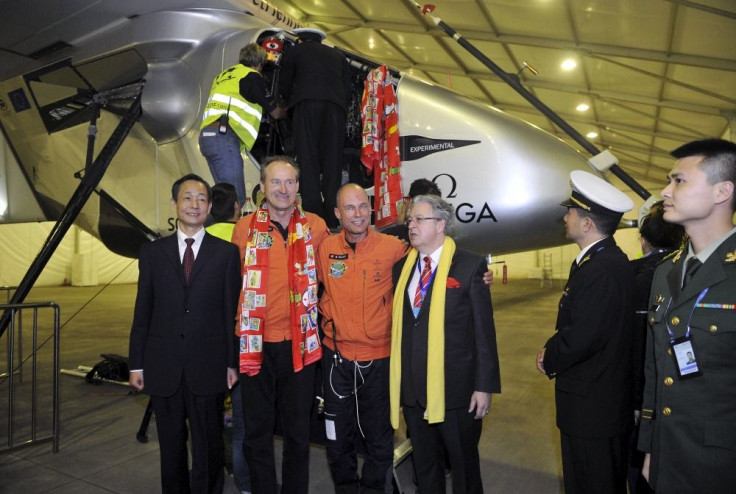Solar Impulse 2: Touchdown in China

After a long flight from Mandalay, Myanmar, Solar Impulse 2 (SI-2) has finally landed in China to complete the fifth flight of its round-the-world expedition. Bertrand Piccard, SI-2’s pilot and project chairman of Solar Impulse, together with his co-pilot André Boschberg, landed on early morning Tuesday local time (17:35 GMT Monday) after spending more than 20 hours flying the solar-powered plane.
The team has waited more than a week in Mandalay for southwestern China’s weather to clear up. After touchdown in Chongqing, Piccard said in his tweet that he and Boschberg were in China to “to show that we can achieve miracles with clean technologies."
Solar Impulse’s power comes from over 17,000 solar cells located on its fuselage, wings and tail and 17.5-horsepower electric motors. The plane weighs almost the same as an SUV or a family car, which is 2.5 tonnes, but its wingspan is massive, measuring 72 metres and is even spread wider than the Boeing 747.
The Swiss plane began its 35,000-kilometre journey around the world in Abu Dhabi on March 9, making several stops along the way. SI-2 had made stops in Oman, Ahmedabad, Varanasi and in Mandalay, where they stayed for 10 days.
The initial plan was to make a very brief stop in Chongqing before heading on towards Nanjing to the east. However, this plan has been delayed due to weather issues. Meanwhile, the SI-2 team is spending a layover in southwest China until weather conditions on the east coast permit safe flight. If the skies clear up, SI-2 will continue to Nanjing to start the attempt to fly non-stop for five days and five nights crossing the Pacific Ocean.
Piccard and Boschberg take turns flying the solar-powered plane in the attempt to travel around the world fuel-free. Though the pilots can take turns over the controls, the plane also has an autopilot feature. SI-2 team hopes to complete the circumnavigation by late July or early August, with the Persian Gulf as the last stage of the journey.
To contact the writer, email: wendylemeric@gmail.com





















